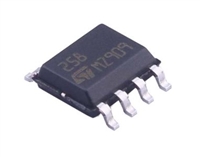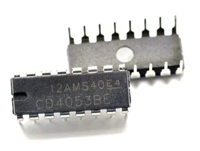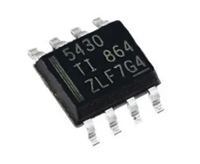PRELIMINARY
PSoC® 5: CY8C55 Family Datasheet
PSoC’s nonvolatile subsystem consists of flash, byte-writeable
EEPROM, and nonvolatile configuration options. It provides up
to 256 KB of on-chip flash. The CPU can reprogram individual
blocks of flash, enabling boot loaders. The designer can enable
an ECC for high reliability applications. A powerful and flexible
protection model secures the user's sensitive information,
allowing selective memory block locking for read and write
protection. Two KB of byte-writable EEPROM is available
on-chip to store application data. Additionally, selected
configuration options such as boot speed and pin drive mode are
stored in nonvolatile memory. This allows settings to activate
immediately after POR.
The CY8C55 family supports a wide supply operating range from
1.71 to 5.5 V. This allows operation from regulated supplies such
as 1.8 ± 5%, 2.5 V ±10%, 3.3 V ± 10%, or 5.0 V ± 10%, or directly
from a wide range of battery types. In addition, it provides an
integrated high efficiency synchronous boost converter that can
power the device from supply voltages as low as 0.5 V. This
enables the device to be powered directly from a single battery
or solar cell. In addition, the designer can use the boost converter
to generate other voltages required by the device, such as a
3.3 V supply for LCD glass drive. The boost’s output is available
on the VBOOST pin, allowing other devices in the application to
be powered from the PSoC.
The three types of PSoC I/O are extremely flexible. All I/Os have
many drive modes that are set at POR. PSoC also provides up
to four I/O voltage domains through the VDDIO pins. Every GPIO
has analog I/O, LCD drive, flexible interrupt generation, slew rate
control, and digital I/O capability. The SIOs on PSoC allow VOH
to be set independently of VDDIO when used as outputs. When
SIOs are in input mode they are high impedance. This is true
even when the device is not powered or when the pin voltage
goes above the supply voltage. This makes the SIO ideally suited
for use on an I2C bus where the PSoC may not be powered when
other devices on the bus are. The SIO pins also have high
current sink capability for applications such as LED drives. The
programmable input threshold feature of the SIO can be used to
make the SIO function as a general purpose analog comparator.
For devices with FS USB, the USB physical interface is also
provided (USBIO). When not using USB, these pins may also be
used for limited digital functionality and device programming. All
the features of the PSoC I/Os are covered in detail in the “I/O
System and Routing” section on page 25 of this datasheet.
PSoC supports a wide range of low power modes. These include
a 300-nA hibernate mode with RAM retention and a 2-µA sleep
mode with RTC. In the second mode, the optional 32.768-kHz
watch crystal runs continuously and maintains an accurate RTC.
Power to all major functional blocks, including the programmable
digital and analog peripherals, can be controlled independently
by firmware. This allows low power background processing
when some peripherals are not in use. This, in turn, provides a
total device current of only 2 mA when the CPU is running at
6 MHz.
The details of the PSoC power modes are covered in the “Power
System” section on page 20 of this datasheet.
PSoC uses JTAG (4 wire) or SWD (2 wire) interfaces for
programming, debug, and test. Using these standard interfaces
enables the designer to debug or program the PSoC with a
variety of hardware solutions from Cypress or third party
vendors. The Cortex-M3 debug and trace modules include FPB,
DWT, ETM, and ITM. These modules have many features to help
solve difficult debug and trace problems. Details of the
programming, test, and debugging interfaces are discussed in
the “Programming, Debug Interfaces, Resources” section on
page 50 of this datasheet.
The PSoC device incorporates flexible internal clock generators,
designed for high stability and factory trimmed for high accuracy.
The Internal Main Oscillator (IMO) is the master clock base for
the system, and has one-percent accuracy at 3 MHz. The IMO
can be configured to run from 3 MHz up to 74 MHz. Multiple clock
derivatives can be generated from the main clock frequency to
meet application needs. The device provides a PLL to generate
system clock frequencies up to 80 MHz from the IMO, external
crystal, or external reference clock. It also contains a separate,
very low-power ILO for the sleep and watchdog timers. A
32.768-kHz external watch crystal is also supported for use in
RTC applications. The clocks, together with programmable clock
dividers, provide the flexibility to integrate most timing
requirements.
2. Pinouts
The VDDIO pin that supplies a particular set of pins is indicated
by the black lines drawn on the pinout diagrams in Figure 2-2 and
Figure 2-3. Using the VDDIO pins, a single PSoC can support
multiple interface voltage levels, eliminating the need for off-chip
level shifters. Each VDDIO may sink up to 100 mA total to its
associated I/O pins and opamps. On the 68-pin and 100-pin
devices, each set of VDDIO associated pins may sink up to
100 mA. The 48 pin device may sink up to 100 mA total for all
Vddio0 plus Vddio2 associated I/O pins and 100 mA total for all
Vddio1 plus Vddio3 associated I/O pins.
Document Number: 001-44094 Rev. *J
Page 5 of 102
[+] Feedback






 MAX6675资料手册参数详解、引脚配置说明
MAX6675资料手册参数详解、引脚配置说明

 LM258引脚图及功能介绍、主要参数分析
LM258引脚图及功能介绍、主要参数分析

 CD4052资料手册参数详解、引脚配置说明
CD4052资料手册参数详解、引脚配置说明

 一文带你了解TPS5430资料手册分析:参数介绍、引脚配置说明
一文带你了解TPS5430资料手册分析:参数介绍、引脚配置说明
